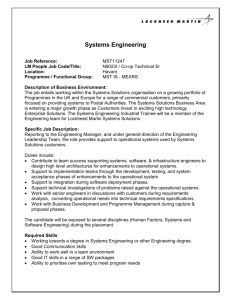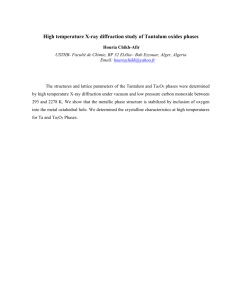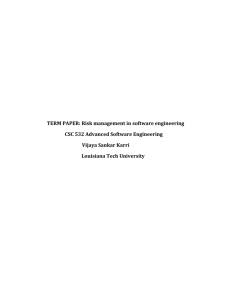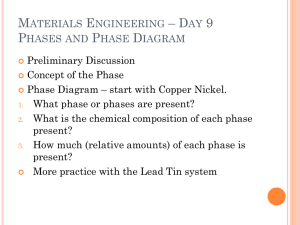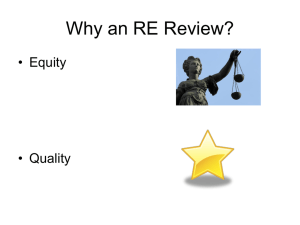The Creative Process
advertisement
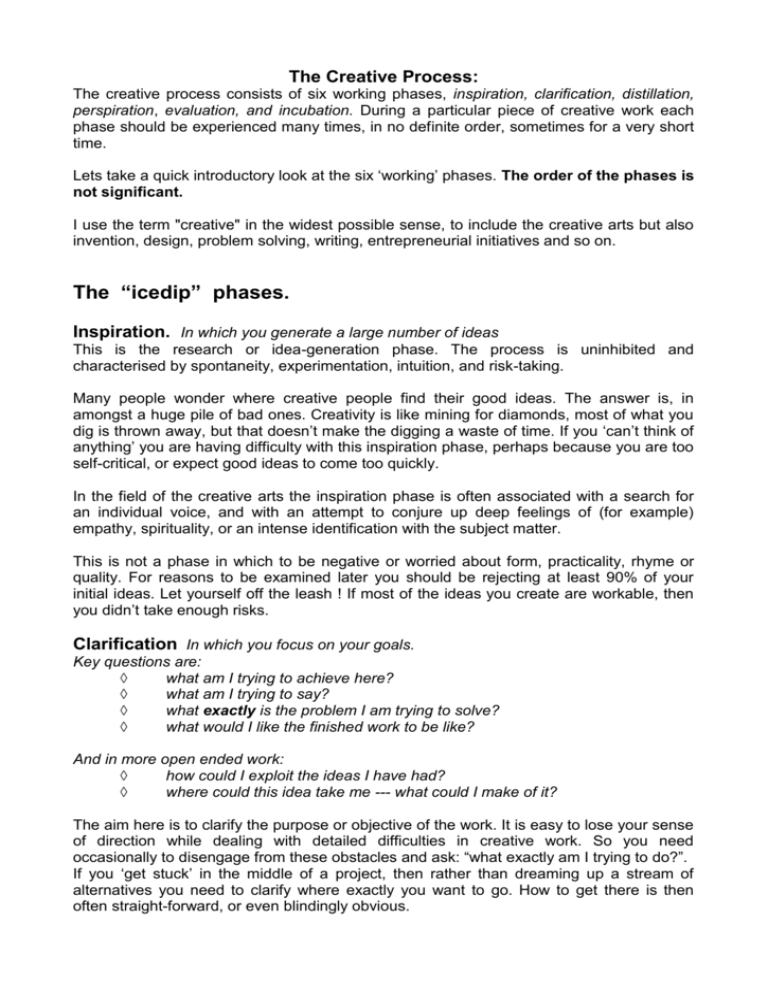
The Creative Process: The creative process consists of six working phases, inspiration, clarification, distillation, perspiration, evaluation, and incubation. During a particular piece of creative work each phase should be experienced many times, in no definite order, sometimes for a very short time. Lets take a quick introductory look at the six ‘working’ phases. The order of the phases is not significant. I use the term "creative" in the widest possible sense, to include the creative arts but also invention, design, problem solving, writing, entrepreneurial initiatives and so on. The “icedip” phases. Inspiration. In which you generate a large number of ideas This is the research or idea-generation phase. The process is uninhibited and characterised by spontaneity, experimentation, intuition, and risk-taking. Many people wonder where creative people find their good ideas. The answer is, in amongst a huge pile of bad ones. Creativity is like mining for diamonds, most of what you dig is thrown away, but that doesn’t make the digging a waste of time. If you ‘can’t think of anything’ you are having difficulty with this inspiration phase, perhaps because you are too self-critical, or expect good ideas to come too quickly. In the field of the creative arts the inspiration phase is often associated with a search for an individual voice, and with an attempt to conjure up deep feelings of (for example) empathy, spirituality, or an intense identification with the subject matter. This is not a phase in which to be negative or worried about form, practicality, rhyme or quality. For reasons to be examined later you should be rejecting at least 90% of your initial ideas. Let yourself off the leash ! If most of the ideas you create are workable, then you didn’t take enough risks. Clarification In which you focus on your goals. Key questions are: ◊ what am I trying to achieve here? ◊ what am I trying to say? ◊ what exactly is the problem I am trying to solve? ◊ what would I like the finished work to be like? And in more open ended work: ◊ how could I exploit the ideas I have had? ◊ where could this idea take me --- what could I make of it? The aim here is to clarify the purpose or objective of the work. It is easy to lose your sense of direction while dealing with detailed difficulties in creative work. So you need occasionally to disengage from these obstacles and ask: “what exactly am I trying to do?”. If you ‘get stuck’ in the middle of a project, then rather than dreaming up a stream of alternatives you need to clarify where exactly you want to go. How to get there is then often straight-forward, or even blindingly obvious. Clarification gets you out of the mire, but it is also required when say, an artist or designer agonises between two or more equally attractive approaches. Such decisions require a clear sense of purpose. If you feel lost, stuck, bogged down, confused, or uncertain about how to proceed, then clarification is what you need. In this clarification phase you have your eye on the ball, you are being strategic and logical, focussing on how the finished work will look. Distillation In which you look through the ideas you have generated and try to determine which ones to work on Here ideas from the inspiration phase are sifted through and evaluated usually in the light of the findings of a clarification phase. The best ideas are chosen for further development, or are combined into even better ideas. This is a self-critical phase. It requires cool analysis and judgment rather than slap-happy spontaneity. However it should not be so critical as to inhibit productivity entirely. Remember, the ideas you have had are only ideas, not complete solutions --- you must not expect too much of them. It is where the ideas can take you that counts, not the ideas themselves. Perspiration In which you work determindedly on your best ideas. This is where the real work is done. You are involved in determined and persistent effort towards your goal, this will usually involve further 'inspiration' ‘distillation’ and 'clarification' phases. Evaluation This is a review phase in which you look back over your work in progress In the evaluation phase you examine your work for strengths and weaknesses. Then you need to consider how the work could be improved, by removing weaknesses but also by capitalising on its strengths. Then there will probably need to be another perspiration phase to respond positively to the suggestions for improvement. Perspiration and evaluation phases often alternate to form a cycle. Hardly anyone gets things perfect first time. Creative people adapt to improve. Many people dislike the evaluation phase at first. However, highly creative people are nearly always inveterate revisors. They tinker with work that would make others gape in delight. Actually this evaluation phase can be very rewarding, and no work of real merit will be produced without it. If Shakespeare and Picasso found they had to revise their efforts, then I expect even you will need to! Incubation In which you leave the work alone, though you still ponder about it occasionally , leaving it ‘on the surface of your mind’. Many brilliant ideas have occurred in the bath, or in traffic jams. If you are able to stop work on a project for a few days, perhaps to work on other things, this will give your subconscious time to work on any problems encountered, it will also distance you somewhat from your ideas so that you are better able to evaluate them. 'Incubation' is particularly useful after an 'inspiration' or a 'perspiration' phase, or if a problem has been encountered. Creative people are often surprisingly patient and untidy, and are content to let half-baked ideas, loose ends and inconsistencies brew away in their sub-conscious until 'something turns up'. Whenever Sir Isaac Newton had a particularly thorny problem he always worked on it just before he went to sleep. He said "I invariably woke up with the solution" Those are the six phases of the creative process. In contrast to this complex, multi-phased process ‘uncreative’ people, though they may have the skills necessary for original work, will tend to latch on to the very first idea that comes to them, and complete the work quickly and uncritically, without revision, and without serious thought about what they were trying to achieve. The first letters of these six phases can be arranged to spell "icedip" which may help you to remember them. Remember though, that each of these “icedip” phases should be encountered many times, sometimes for very short periods, and not necessarily in any particular sequence. You need to adopt the right phase at the right time. For example, no amount of distillation can help you if need clarification. Many creative blocks are due to the determined adoption of an inappropriate phase. So if stuck ... switch phases ! When you are involved in your creative work, do you make good use of each phase and use each phase as often as you should? Techniques to help you work effectively in each of these phases will be provided in later chapters. Mind Sets One of the main difficulties for creative people is that the different phases require radically different, even opposite ‘mind-sets’, each of which is difficult to sustain without deliberate effort. These are outlined below: inspiration: In order to generate a large number of different ideas you need to be deeply engrossed, fearless and free: Spontaneous, risk-taking, joyful, ‘slap-happy’, intuitive and improvisational. It is very common instead to be self-conscious and fearful, and to try to use inappropriate logical thinking. There is also a common tendency to accept your first decent idea, instead of exploring more fully. clarification: In order to clarify what you are trying to achieve you need to be: strategic, unhurried and impertinent: analytic, logical, and clear minded, and not afraid to ask difficult questions. Many people fail to clarify, they fail to achieve their goals because they don’t know what they are. evaluation: In order to improve earlier work you need to be critical positive and willing to learn. Self-critical (ruthlessly so sometimes), but positive about your vision of how the work could be, and your ability to do this. You must see weaknesses as opportunities to improve, and to learn. Instead creative people often see criticism as a threat, and so fail to improve their work, and to learn. distillation: In order to choose your best ideas from the inspiration phase you need to be positive, strategic, and intrepid. Judgmental, but optimistic about where each idea might take you. Clear about where you want the ideas to take you, and daring enough to take on original ideas. You need to be realistic but ready to take on challenges. Common mistakes are to choose ideas which are familiar and well worked out instead of those that will best achieve your intentions. incubation: In order to leave work for your sub-conscious to work on you need to be unhurried, trusting, and forgetful. You must expect difficulties, trust yourself to find a way round them, and not be panicked into adopting a weak solution. Few people realise that some ideas take time to hatch, and see difficulties and indecision as a sign of failure. perspiration: In order to bring your ideas to fruition you need to be: uncritical, enthusiastic and responsive. You need to be positive and persistent, deeply committed and engaged, and ready to respond positively to any shortcomings. It is common for even very creative people not to make the best of this phase. They are often uncertain and self-critical, and see weaknesses as lack of talent, instead of as a need for more work or a different approach. The creative person needs to switch continually between these radically different, and difficult mind-sets. This requires enormous flexibility as some mind-sets are almost the exact opposite of each other. In the inspiration phase you need to be uncritical, risk taking, and subjective, but in the clarification phase you need to be critical, careful, and objective. If you use an inappropriate mind set you are in deep trouble: you will not get many original ideas if you are critical, careful and strategic, and you will not clarify your purpose effectively if you are slap happy and uncritical. Most people find they are stronger in some phases than in others, perhaps because our personality often gives us a predominant mind-set. Some people have masses of ideas, but little idea how to work them to a successful conclusion. Others have difficulty getting the ideas on which to exercise their persistence, skills, and good judgment. insert: cartoon style diagram of a long chain with links named inspiration, clarification, evaluation, distillation, incubation, and perspiration. etc. A given piece of creative work involves a long chain of the ‘icedip’ phases, each phase being revisited many times. But a chain is only as strong as its weakest link. You need to know your weakest phases, and the techniques and mind-sets which will help you make them stronger. There are some simple strategies which can hugely improve your performance, even in your strongest phases. Though these will take practice if you want to make the best of them. A better understanding of each phase along with its tools and mind-set will help avoid those blocks and frustrations which prevent you performing to the best of your ability. But first we need to realise what creative thinking is not! This is an extract from Geoffrey Petty (1996) “How to be Better at Creativity” Kogan Page


